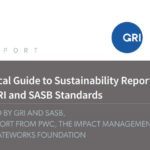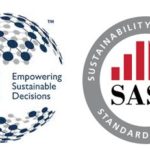
Last week, GRI and SASB took the stage together in a joint session at the Ceres Conference in San Francisco, revealing further collaboration plans. Most people working in the field of sustainability are familiar with the so-called rivalry between GRI and the Sustainability Accounting Standards Board (SASB). According to that narrative, the two organizations are in competition with one another. In a joint article published on GreenBiz earlier this year, Tim Mohin, Chief Executive of GRI, and Jean Rogers, CEO of SASB, dispelled this false narrative, by highlighting the ways their organizations complement each other, fulfilling different needs for different audiences. Both GRI and SASB are united by their desire to help businesses contribute to sustainable development. The article ended on a positive note for further cooperation, which has now been realized at the recent Ceres Conference in San Francisco.
Ceres Conference 2017
The 2017 Conference of the US sustainability non-profit organization Ceres (which co-founded GRI in 1997), held on 26-27 April, attracted sustainability leaders from business, the investment community, and civil society. The conference theme “Sustainability is the Bottom Line”, was an acknowledgement that given current political developments, now, more than ever, business leadership is needed to address pressing global sustainability challenges. GRI’s Chief Executive Tim Mohin attended the two-day event and shared the stage with SASB.
Harmonizing Sustainability Disclosure
Taking the stage together in a session on “Harmonizing Sustainability Disclosure”, Mohin, and Janine Guillot, Director of Capital Markets Policy and Outreach at SASB, launched a lively discussion on future cooperation between their organizations. They also took the opportunity to clarify some of the differences between the two frameworks as well as how they can be used together. SASB’s standards primarily address the data needs of investors, focusing particularly on financial materiality as defined by the United States Supreme Court. The GRI Sustainability Reporting Standards (GRI Standards) focus on multiple stakeholders, including civil society, labor, governments, as well as investors, and call on organizations to make their own materiality assessments based on discussions with their most important stakeholders.
The question and answer rounds during the session, brought forth several specific inquiries about the relationship between GRI and SASB. Attendees asked both Mohin and Guillot about the opportunities they saw for their organizations to promote more robust reporting. The two speakers addressed this question by highlighting the complementary nature of their respective reporting frameworks. According to Guillot, SASB disclosures are in areas where data are more easily quantifiable. This is the case with environmental data, which therefore also captures the interest of the investors. SASB focuses on these areas, the full scope of sustainability topics. Mohin, on the other hand, stressed GRI’s ambition to support better reporting in areas such as human rights, which are difficult to quantify but crucial to achieving solutions to global challenges.
Next steps
“The visions of both organizations target the same end goal: to move beyond disclosure and reporting, towards performance and results that advance sustainable development,” Mohin stated. “Harmonizing the sustainability reporting landscape is the path forward.”
Elaborating on the future vision of GRI and SASB’s collaboration, Guillot revealed plans to carry out a comprehensive mapping exercise between SASB and GRI.



